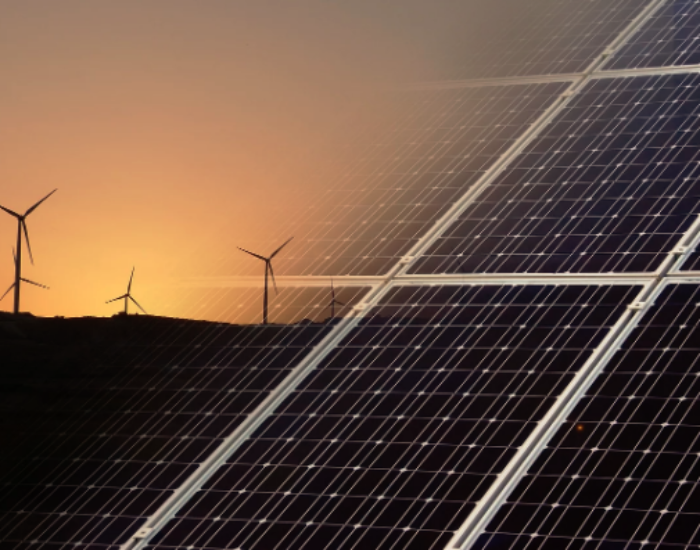From an era with computers performing limited calculations and functions, the progress the global IT sector has made in just two decades has been nothing short of extraordinary. Cloud computing has made it possible for businesses to scale rapidly. Artificial Intelligence and Automation are rapidly replacing the unskilled workforce (whilst creating the need for more skilled professionals). And the Internet of Things is bringing technology to every household, making life infinitely easier. But, there is one aspect of all this that may have been neglected throughout the quest to make life more convenient – and that is energy consumption.
The problem of climate change is undeniably real. The rising temperatures worldwide (July 2019 was recognised as the warmest month ever observed), not to mention depleting water levels, melting icebergs and fires in the Arctic region, Greenland, Alaska and Australia, are all clear indicators. While activists are focused more on the emissions from aviation, automotive and energy sectors, the damage caused by the communications sector has received lesser attention. In 2016, it was reported that data centres used about 416.2 terawatt-hours of energy – a whopping 2.5-3 percent of the world’s energy consumption. Predictions further state that these data centres would consume nearly a fifth of global electricity by 2025. With Cisco’s assessment of 95% all data centre traffic coming from cloud environments by 2021, this is essentially evidence that cloud computing has a significant impact on the environment.
Cloud Computing and Climate Change
The issue essentially lies in data centres, which store and process extremely large amounts of data for both consumer and industrial needs. While large amounts of power going into processing and storage, equally high amounts of energy are utilised in cooling the equipment and keeping the hardware cool. In fact, research shows that cooling takes up nearly 40 percent of the total energy consumption. Since most of these data centres need to be run 24/7, they need to be kept in round-the-clock temperature-controlled environments. A way to reduce the energy required for cooling is to build the data centres in regions with cold climates, but recent data localisation laws make this a challenge.
One major way to curb emissions is via the use of renewable energy. Several large cloud service providers are already taking steps to reach carbon neutrality and reduce, if not eliminate, their carbon footprint.
- Microsoft, for example, aims to reach a target of 70% renewables by 2023.
- Google already boasts of being 100% renewable.
Energy efficiency is another key point to consider. Even small improvements in efficiency by large cloud providers like Microsoft and Google can lead to large-scale savings in energy consumption.
Edge Computing and Climate Change
While cloud computing is still going strong, the newest buzzword in the industry is edge computing. Its concept of localised data centres (or micro-data centres) promises to vastly improve latency and prove invaluable in IoT applications like autonomous cars. The major question that arises here, however, is what will it mean for energy consumption?
As for the answer to the question, it is not easy to ascertain, mainly because the edge is a relatively new technology, still gaining its bearings in the industry. However, at first glance, the cloud may seem to have an advantage over the edge in one aspect – scale. Since cloud data centres are huge, there may be more scope for improvement in energy efficiency, and slight improvements are likely to have larger impacts on power consumption. Others may also argue that that the edge is more of a complementary technology, not negating the importance of the cloud in any way. This means additional, local data centres which do not replace or reduce the power consumption of cloud data centres in any way.
However, energy-saving techniques similar to those used in large data centres can be used to reduce power consumption in smaller data centres as well:
- The use of lithium-ion batteries and renewable energy are at the forefront of this. Studies related to the power consumption of the edge are not many, and a focus on how to improve efficiency and reduce energy consumption is needed when it comes to this fledgeling technology.
- The few studies conducted do indicate positive signs for edge computing. One such study shows that a distributed architecture, as in edge computing, consumes between 14% and 25% less energy than a fully centralized architecture, as in cloud computing. This is a hopeful result.
Perhaps the more interesting impact edge computing shall have will not be based merely on the power consumption of individual devices, but the applications these devices will enable. Edge computing and IoT will enable a whole host of new technologies – such as smart grids – which could intelligently adjust and supply power to areas based on changes in consumption.
- Ericsson Research’s smart guide is estimated to cut emissions by 4% by the end of the decade. The UK government is fairly positive on this, mandating smart energy meters in all homes by this year.
- A whole range of other applications remain – air quality monitoring, carbon emissions monitoring – all of these can be enabled on a scale previously unseen. Edge devices would allow cities to intelligently switch power supply, optimise efficiency, and meet their climate targets, without having to rely on large, inefficient data centres to do the job.
- Livestock monitoring, a subset of smart agriculture, is alone estimated to cut 3% of our carbon emissions.
In conclusion
When it comes to ascertaining the impact of edge computing on climate change and comparing it to the cloud, the jury may still be out on the exact numbers. But it is certainly clear that the potential is immense, and that more research will only help us arrive at more precise values of the impact the edge will have. The cloud and edge, both present opportunities in terms of improving operational efficiency and infrastructure efficiency as well as shifting operations to renewable energy.

Kshitish is a ‘startup expert’ and has been involved with early stage startups, seeing various phases of growth, for more than 15 years. A specialist in Product Management, User Experience, Technology and Product Growth/Strategy, Kshitish is a seasoned entrepreneur with deep expertise in building enterprise products and horizontal/vertical SaaS. Kshitish did his PG in Product Design from NID, Ahmedabad.

